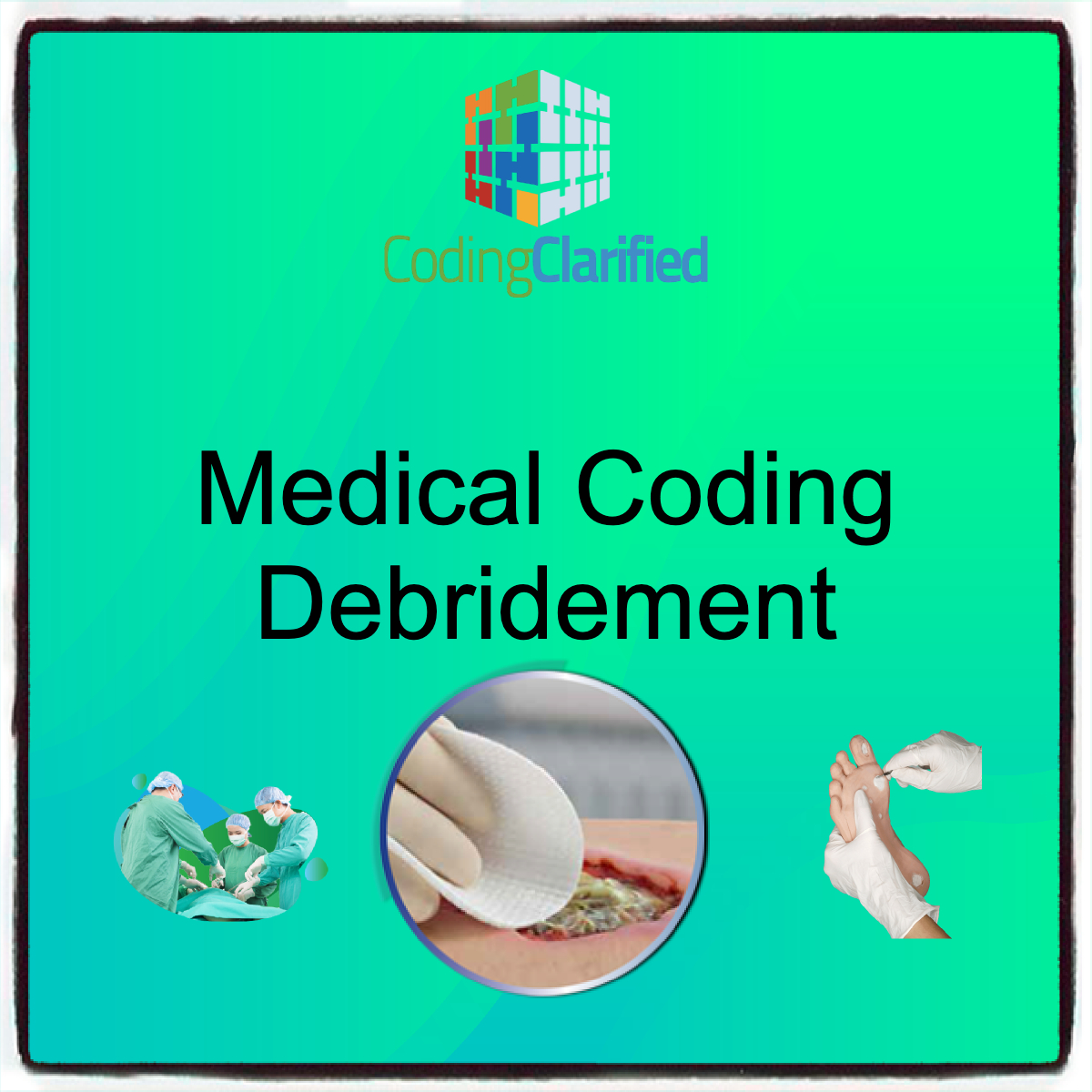Understanding Debridement Coding Guidelines: Excisional vs. Selective Debridement
Debridement is a critical procedure in wound management, involving the removal of necrotic tissue to promote healing. Accurate coding and billing for debridement services are essential for proper reimbursement and compliance with healthcare regulations. This article outlines the guidelines for coding and billing debridement, focusing on the differences between excisional and selective debridement.
What is Debridement?
Debridement is performed to clean wounds by removing dead, damaged, or infected tissue. This process is crucial for preventing infection and facilitating the healing of viable tissue. The two primary types of debridement relevant to coding are excisional and selective debridement.
Excisional Debridement
Excisional debridement involves the surgical removal of tissue down to healthy tissue. This method is often used for larger wounds, ulcers, or areas with extensive necrosis. Excisional debridement is typically performed in an operating room and may require anesthesia.
Coding for Excisional Debridement
- A description of the procedure as “excisional”
- A description of the instrument used to cut or excise the tissue (e.g., scissors, scalpel, curette)
- A description of the tissue removed (e.g., necrotic, devitalized or non-viable)
- The appearance and size of the wound (e.g., down to fresh bleeding tissue, 7 cm x 10 cm, etc.)
- The depth of the debridement (e.g., to skin, fascia, subcutaneous tissue, muscle, or bone
CPT codes for excisional debridement are based on the size of the area debrided. The relevant codes include:
- 11042: Debridement, skin, and subcutaneous tissue, for wounds of 20 sq cm or less.
- 11043: Debridement, skin, and subcutaneous tissue, for wounds of 20.1 to 30 sq cm.
- 11044: Debridement, skin, and subcutaneous tissue, for wounds of 30.1 to 40 sq cm.
- 11045: Debridement, skin, and subcutaneous tissue, for wounds over 40 sq cm.
These codes should reflect the size of the wound at the time of the procedure. Accurate documentation of the size and depth of the debridement is essential for proper coding.
Selective Debridement
Selective debridement, on the other hand, involves the removal of only non-viable tissue while preserving healthy tissue. This approach can be performed using various methods, including sharp debridement with scalpels, enzymatic debridement, or mechanical methods. Selective debridement is often done in outpatient settings and does not typically require anesthesia.
Coding for Selective Debridement
CPT codes for selective debridement include:
- 97597: Debridement (e.g., removal of devitalized tissue) of open wounds, non-excisional, for wounds of 20 sq cm or less.
- 97598: Debridement (e.g., removal of devitalized tissue) of open wounds, non-excisional, for wounds over 20 sq cm.
Key Differences in Coding
- Method: Excisional debridement is surgical and more invasive, while selective debridement is less invasive and aims to preserve healthy tissue.
- Setting: Excisional debridement typically occurs in an operating room, while selective debridement may be performed in outpatient or clinic settings.
- CPT Codes: The codes differ based on the method and size of the wound being treated. It’s crucial to select the correct code based on the type of debridement performed.
Best Practices for Coding and Billing Debridement
- Detailed Documentation: Proper documentation of the procedure, including the size, location, and depth of the wound, as well as the method of debridement, is critical for accurate coding and reimbursement.
- Understand Guidelines: Familiarize yourself with the latest coding guidelines from the American Medical Association (AMA) and other relevant bodies to ensure compliance and accuracy.
- Use Appropriate Codes: Select the most accurate CPT codes that reflect the procedure performed. Ensure that any modifiers necessary for billing are applied correctly.
- Educate Staff: Provide ongoing training for coding and billing staff on the nuances of debridement coding to enhance accuracy and reduce claims denials.
- Regular Audits: Conduct periodic audits of coding practices related to debridement services to identify areas for improvement and ensure compliance.
Accurate coding and billing for debridement procedures are essential for proper reimbursement and patient care. Understanding the differences between excisional and selective debridement, including the appropriate CPT codes and documentation requirements, will help healthcare providers navigate the complexities of coding in wound management. By implementing best practices and staying informed, providers can enhance their coding accuracy and support effective patient treatment.
Let Coding Clarified “clarify” medical coding for you!
See more at the Coding Clarified Blog here:

